Seafood Gumbo
Classic Cajun Seafood Gumbo is intensely rich, yet delicate, and perfect for a chilly day. Chock full of shrimp, crab and oysters, this gumbo recipe sings with flavors from the sea. It makes a big batch, too, so you can share it or freeze it for later. Makes 12 servings.
Love Louisiana recipes? Give Crawfish Etouffee and Ground Beef Meat Pies a try, too!
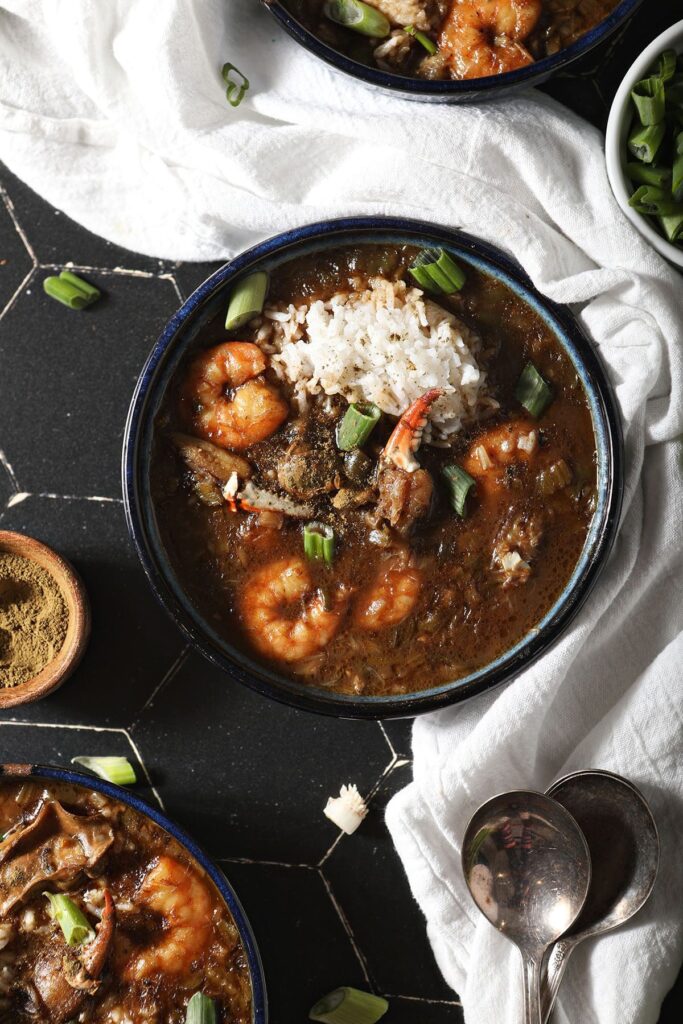
This Louisiana Seafood Gumbo recipe highlights the best seafood and strikes a beautiful balance of briny and full-bodied without being overwhelming. The broth itself is velvety, and when combined with the crab meat, oyster and shrimp, it’s something special.
My husband and I first quantified this recipe in 2021, just before the Snowpocalypse here in Texas. We made it for New Year’s Day this year with his entire family, and got a lot of help, thanks to their gumbo knowledge.
As my father-in-law said, “It tastes like good seafood gumbo.”
And you know what? That’s a big ole success for this Tennessee girl.
What is gumbo?
Gumbo is a thick soup that is traditionally filled with vegetables, like onion, green bell pepper and celery, as well as a protein. (Some gumbos call for chicken and sausage; others, like this one, seafood.)
It’s believed that gumbo was brought to our country by enslaved people, and today, different regions of the country have their own styles of gumbos. Which is why you’ll see gumbos ranging from an okra and tomato-filled Gullah Geechee to a seafood and tomato Creole one.
Some notes on gumbo variations and where this dish comes from:
There are lots of different types and styles of gumbos. Gumbo is a word that’s found in several West African dialects and means okra.
I’ve also read that there’s a word in Native Choctaw similar to gumbo that means filé, which are the ground sassafras leaves commonly used as garnish in gumbo.
The gumbo recipe I’m sharing today is a Cajun gumbo, which gets its flavor from dark roux and highlights shrimp, crab and oysters, along with the “Cajun trinity” or the “holy trinity” of vegetables: onion, green bell pepper and celery.
We’re not using andouille sausage or another smoked sausage in this recipe.
It’s a sister of our Chicken and Sausage Gumbo, but this one highlights the flavors of the sea.
If you want to learn more about the history of gumbo, the different styles and types and other frequently asked questions, check out Gumbo 101.
Other Louisiana recipes to try: Crawfish Pie | Chicken and Sausage Jambalaya | Cajun Shrimp and Grits | Slow Cooker Red Beans and Rice | Instant Pot Gumbo
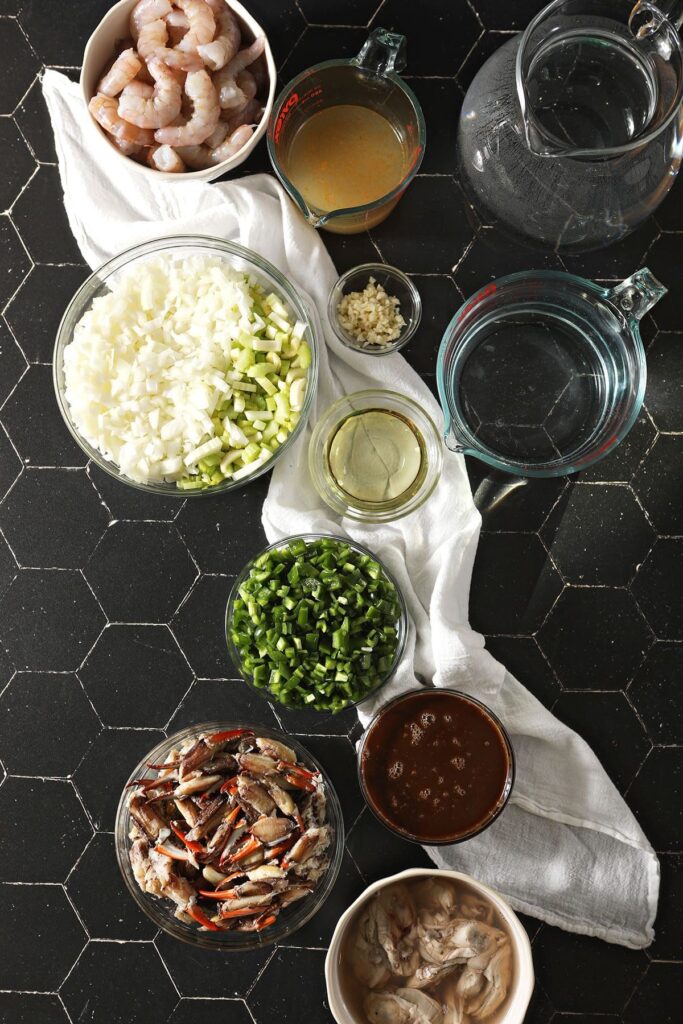
Tools you need to make this recipe
The Speckled Palate participates in affiliate programs. As an Amazon Associate, I earn a commission from qualifying purchases. Please refer to my disclosure page for more information about these affiliate programs.
- A large stockpot or Dutch oven (needs to fit 17 cups of liquid plus lots of seafood)
- Sharp knife and cutting board
- Liquid measuring cup
- Wooden spoon
- Rice cooker (or a saucepan with a lid) to cook your rice in
Ingredients you need to make a Louisiana seafood gumbo, Cajun-style
Before we dive into the ingredient list, let me go ahead and point out that the quality of the seafood you use in this recipe matters. You want to use the highest quality available.
Also, please, please don’t make substitutes in this recipe unless otherwise specified. The gumbo simply won’t taste like how it’s intended to taste. If you come back to complain, I will say I told you so. 😉
- Unflavored oil — to sauté our veggies in! While this isn’t a necessary step, we like how it adds a little extra flavor.
- The Trinity — this is the base of many Cajun and Creole recipes. It includes chopped green bell pepper, onions (yellow or white) and celery and imparts a ton of flavors to our stock.
- Garlic — because is this ever a bad idea? No. No, it is not.
- Liquids — we’re using a combination of water and chicken stock or chicken broth. If you’re feeling fancy and can find it, seafood stock would also be excellent here in place of the chicken broth.
- Seasonings — Salt-Free Creole Seasoning, salt and pepper. We like to use a salt-free seasoning because most Creole and Cajun seasonings are super salty. (Fun fact: They’re basically the same thing, so you can use Cajun seasoning in this recipe in place of the Creole seasoning.)
- Dark roux (if you don’t plan on making your own) or roux ingredients — which include equal parts unflavored oil and all-purpose flour. This is sometimes referred to as a chocolate roux.
- Shrimp — we prefer wild caught Gulf shrimp in this recipe because the quality makes a difference. Make sure to peel ‘em before you throw them into the pot so they’re easy to enjoy!
- Crab — this recipe calls for both clawmeat and the claws themselves. The crab really adds delicate flavor to the gumbo and cannot be replaced with another ingredient. Depending on where you live, use the best local (or local-adjacent) crab that you can find.
- Oysters — and their brine! This adds the best umami, so please don’t toss this liquid out from the packaging. For this recipe, we’re using fresh shucked oysters. You can find them at many specialty stores and seafood markets.
- White rice or brown rice, for serving.
- Garnishes — green onions, fresh parsley and gumbo file, which are ground up sassafras leaves. It’s sometimes called filé powder. Sprinkle these on top of your bowl of gumbo for extra flavor.
If you can’t find one of the seafoods, consider adding proportionate amounts of the other two. (So if you can’t find crab, add 3/4 lb. of both oyster and shrimp in addition to what the recipe calls for below.)
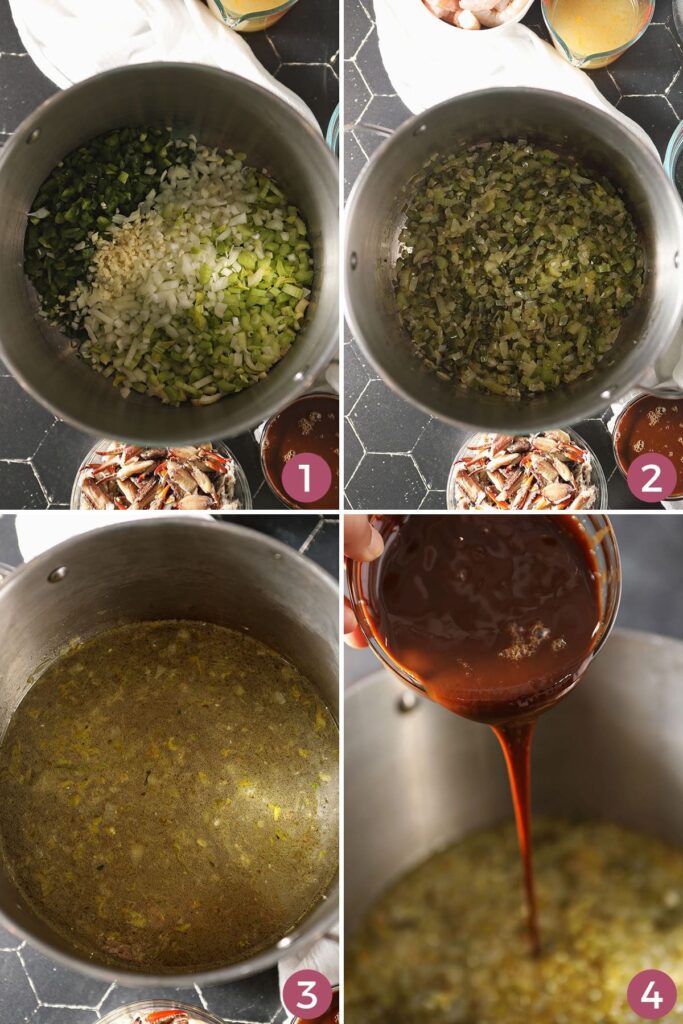
How to make Seafood Gumbo
Make your dark roux, if you’re making one, and set it aside. (You need 16 oz. or 2 cups of roux for this recipe, so use 1 cup oil and 1 cup flour.)
Mise en place. Chop the veggies. Peel your shrimp. Measure out your water and stock.
Saute the veggies. Heat the oil in your gumbo pot over medium heat. Once hot, add the chopped veggies. Cook for 10-15 minutes, or until softened.
Add the liquid. Pour in the water and the stock, and bring to a boil. (You can turn up the heat to high at this point, but it’s still going to take 15-20 minutes or so to bring this amount of liquid to a boil.)
Add the roux. When the liquid has reached a rolling boil, measure in the roux, stirring consistently to help the mixture break down into the boiling water.
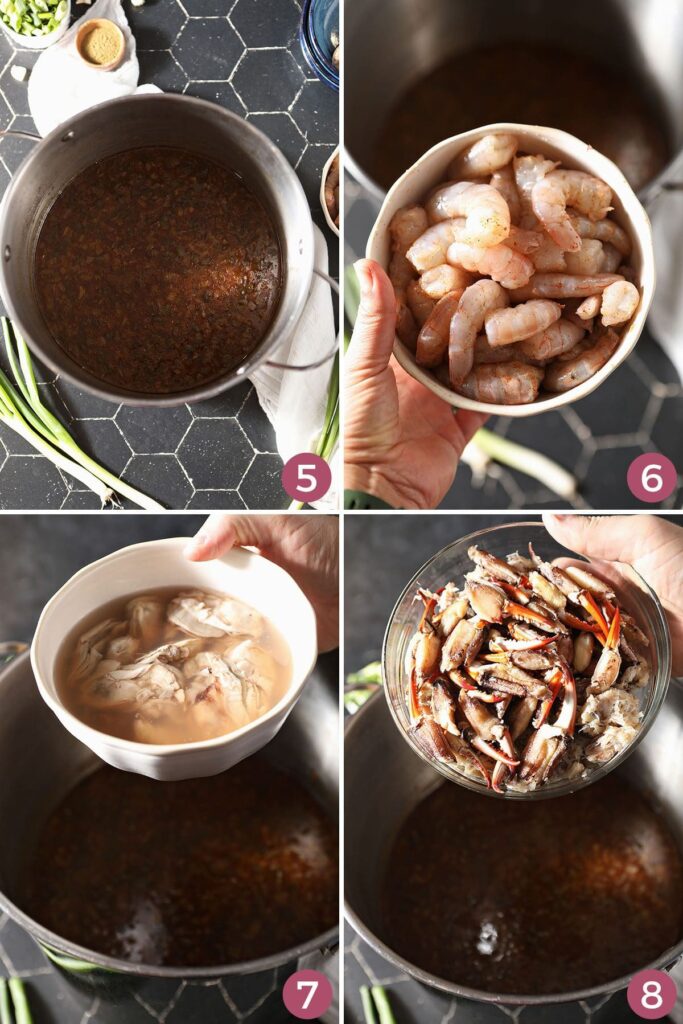
Simmer for 30 minutes. At least. You can simmer it for longer if you so desire.
Before serving, add the seafood. Make sure that the water is boiling when the seafood is added.
- 20 minutes before serving, add the shrimp.
- 15 minutes before serving, add in the oyster and crab.
It is important to add the seafood at the end so that it doesn’t overcook and get tough!
Serve immediately with rice and your favorite garnishes.
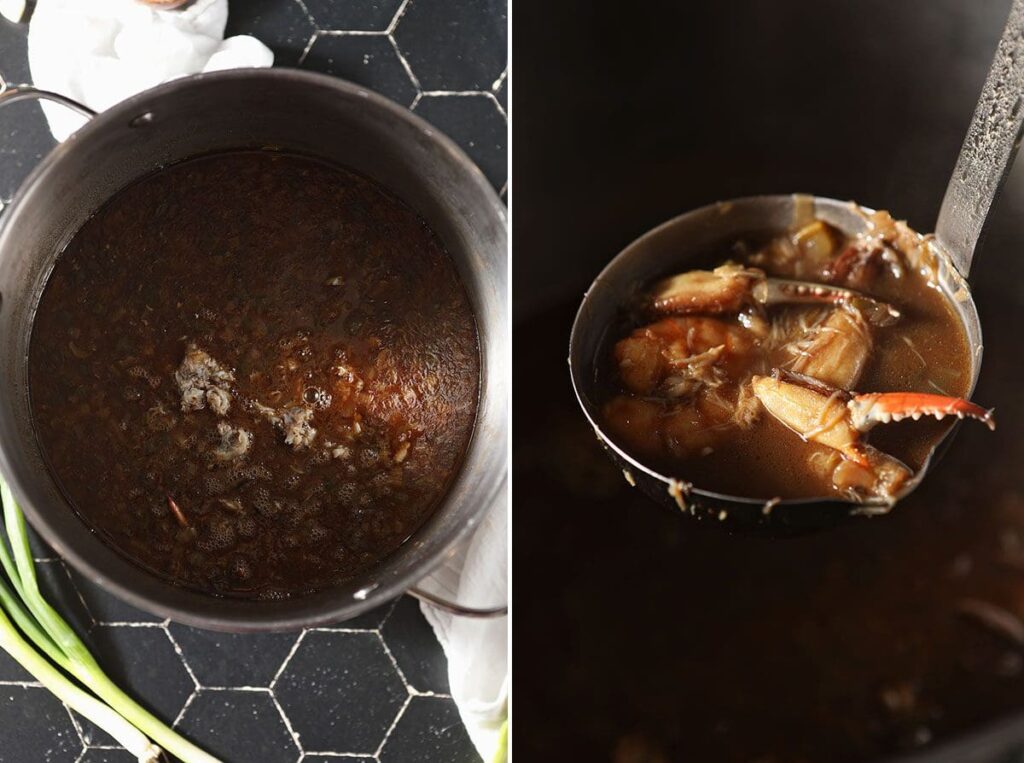
Erin’s Easy Entertaining Tips and Tricks
A Seafood Gumbo is considered a fancier gumbo since seafood typically costs more than what you’d normally find in a Chicken and Sausage Gumbo. (I’ve heard seafood gumbos referred to as “Christmas Gumbos” because they’re for special occasions.)
If you want to share your Seafood Gumbo with guests, you’re an excellent friend! 😉
We’ve been making gumbo for years for our annual New Year’s Day party, and I have a few tips and tricks to making the hosting and entertaining easier on yourself…
- Make your gumbo a day in advance… but leave out the seafood until the day of. Gumbo takes some time to set up and get going, but it takes time for the flavors to meld together. Put it together the day before your party, and store it in the fridge. Skim any excess fat from the top before reheating the morning of your party, then adding the seafood right before you serve it.
- Have the fixings to serve it with! Rice is a must, and so is gumbo file* (affiliate link)! Some folks enjoy potato salad with gumbo, while others add hardboiled eggs.
- Double the recipe for a crowd or half it for a smaller gathering. When halving this recipe, we always err on the side of more protein and round up to the nearest pound if necessary.
The key to any gathering that involves food is everyone having fun. That includes you, too, so don’t let this stress you out!
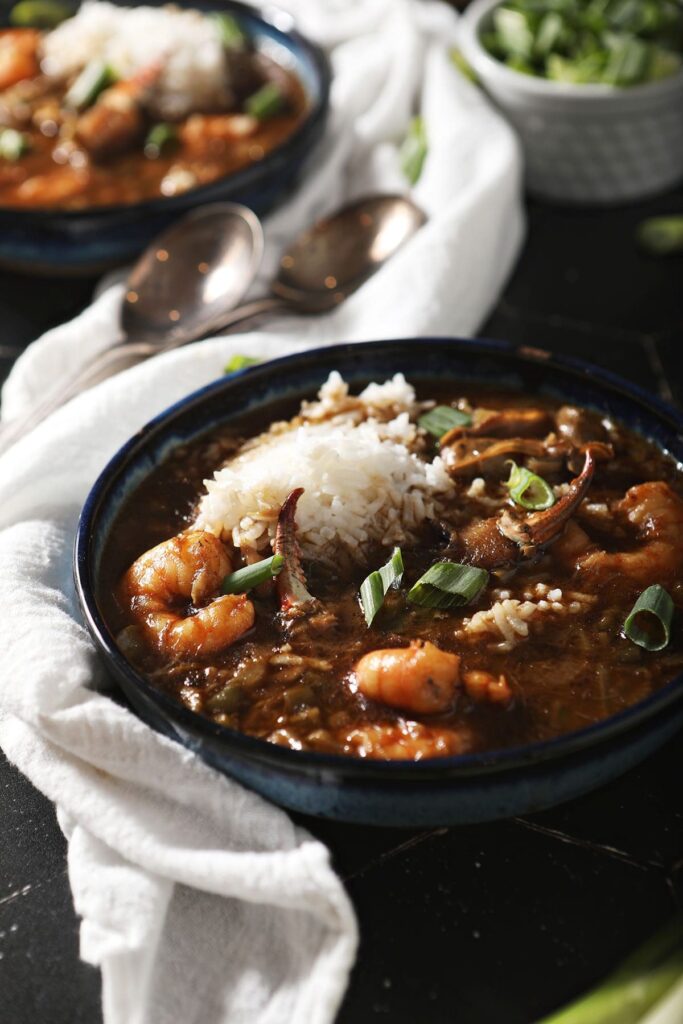
Frequently Asked Questions
This seafood gumbo is made from a combination of the Cajun trinity (green bell peppers, onions, celery) plus a bounty of fresh seafood from the Gulf, which includes shrimp, crab and oysters.
Honestly, the roux adds such beautiful flavor to gumbo that it’s really important to do it right (or find one that’s been pre-made for you.)
A roux is equal parts oil and flour. For this recipe, you’ll need 1 cup oil and 1 cup flour. Heat a skillet over medium heat on your stovetop, and add the oil. When the oil is shimmering, add the flour. Cook until it turns a dark brown. Stir constantly so it doesn’t burn. It’s done when it smells nutty and delicious.
This can take 30-45 minutes, just depending on how warm your skillet gets and how comfortable you feel cooking it. I always recommend starting out slowly because a burned roux cannot be used.
Here are a few things you can do in advance:
Chop all the veggies. We will sometimes do this 1-2 days before we make our gumbos. Store them in the fridge in a sealable food container. Make sure it’s sealed tight because those onions will stink up your fridge.
Chop the garnishes, too. Do this at the same time you’re prepping the veggies for the gumbo itself, and store separately.
Cook your rice. Warm rice is awesome, but it can certainly be reheated in the microwave easily.
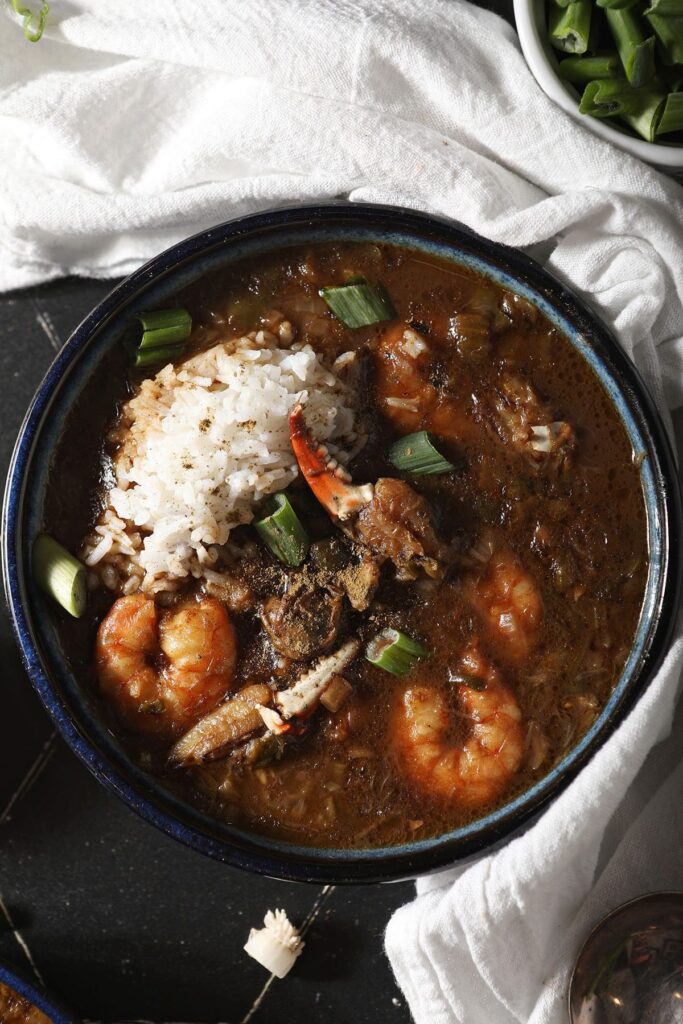
How to find seafood for gumbo
If you don’t live near an ocean, finding quality seafood might be challenging! Here are some tips and tricks of how to find these ingredients near you:
- Visit a high-end grocery store. If it’s got a fish counter, start there and also ask about their frozen selections, too.
- Find a specialty seafood shop. This has been my go-to since living in Dallas. If you give them a heads up, you can have them special order the ingredients you need, too.
- Special order it. There are online companies like Giuseppe’s Market at Samuel’s Seafood, Cajun Grocer and others that will ship fresh or frozen seafood to you.
Whatever you do, please do not purchase imitation crab or canned crab for this recipe. It doesn’t have the same flavor or mouth feel. And if you’re going to go all-out on a Seafood Gumbo, treat yourself to the real thing.
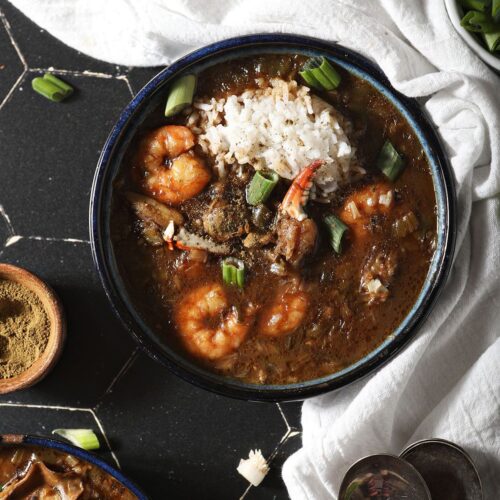
Seafood Gumbo
Ingredients
- 4 tablespoons flavorless oil
- 3 large yellow onions about 3 ½ cups chopped
- 5-6 celery stalks about 2 ¼ cups chopped
- 3-4 large bell peppers about 2 ½ cups chopped
- 4 garlic cloves minced
- 1 cup chicken stock *or seafood stock*
- 4 qts. water (1 gallon)
- 1 ½ teaspoons kosher salt
- 1 teaspoon Tony Chachere’s Salt-Free Creole Seasoning
- Black pepper to taste
- 16 oz. dark roux (2 cups)
- 2 lbs. shrimp peeled
- 1 lb. crab clawmeat
- ½ lb. crab claws
- 1 lb. fresh shucked oysters + brine
Garnishes
- Green onions chopped
- Parsley chopped
- Gumbo file
Equipment
- Jarred roux
- Tony Chachere’s No Salt Seasoning Blend
- Gumbo file
As an Amazon Associate and member of other affiliate programs, I earn from qualifying purchases.
Instructions
- Make a dark roux, if you’re making one, and set it aside. (You need 16 oz. or 2 cups of roux to make this recipe. If you are going to make your own roux, please read how to make a dark roux.)
- Prep the ingredients. This means chop the veggies. Peel your shrimp. Measure out your water and stock. Find a pot large enough. (It needs to fit 17 cups liquid plus 4 ½ lbs. seafood.)
- Saute the veggies. Heat the oil in your gumbo pot over medium heat. Once hot, add the chopped veggies. Cook for 10-15 minutes, or until softened.
- Add the liquid. Pour in the water and the stock, and bring to a boil. You can turn up the heat to high at this point, but it’s still going to take 15-20 minutes or so to bring this amount of liquid to a boil.
- Season the liquid with salt and salt-free Creole seasoning.
- Add the roux. When the liquid has reached a rolling boil, measure in the roux, stirring consistently to help the mixture break down into the boiling water.
- Simmer for at least 30 minutes. You can simmer it for longer if you so desire to let the flavors meld.
- Twenty minutes before serving, add the shrimp to the gumbo liquid.
- Fifteen minutes before serving, add in the oyster and crab, stirring occasionally to cook. It is important to add the seafood at the very end so that it doesn’t overcook and get tough!
- Give the gumbo a taste, and add extra seasonings, if necessary.
- Serve immediately with rice and your favorite garnishes.
Video
Notes
If you don’t live near an ocean, finding quality seafood might be challenging! Here are some tips and tricks of how to find these ingredients near you:
- Visit a high-end grocery store. If the store has a fish counter, that’s a great place to start. They might also have frozen seafood that you can choose from, too.
- Find a specialty seafood shop in your town. This has been my go-to since living in Dallas. If you give them a heads up, you can have them special order the ingredients you need, too.
- Order it online. There are online companies that will ship fresh or frozen seafood to your doorstep.
Nutrition

About the Author:
Erin Parker is a Southern gal living in Texas with her husband and two daughters. She started The Speckled Palate to share what she was cooking as a newlywed… and over the years, it’s evolved to capture her love for hosting. Specifically, the EASIEST, lowest key entertaining because everyone deserves to see their people and connect over good food. Learn more about her…

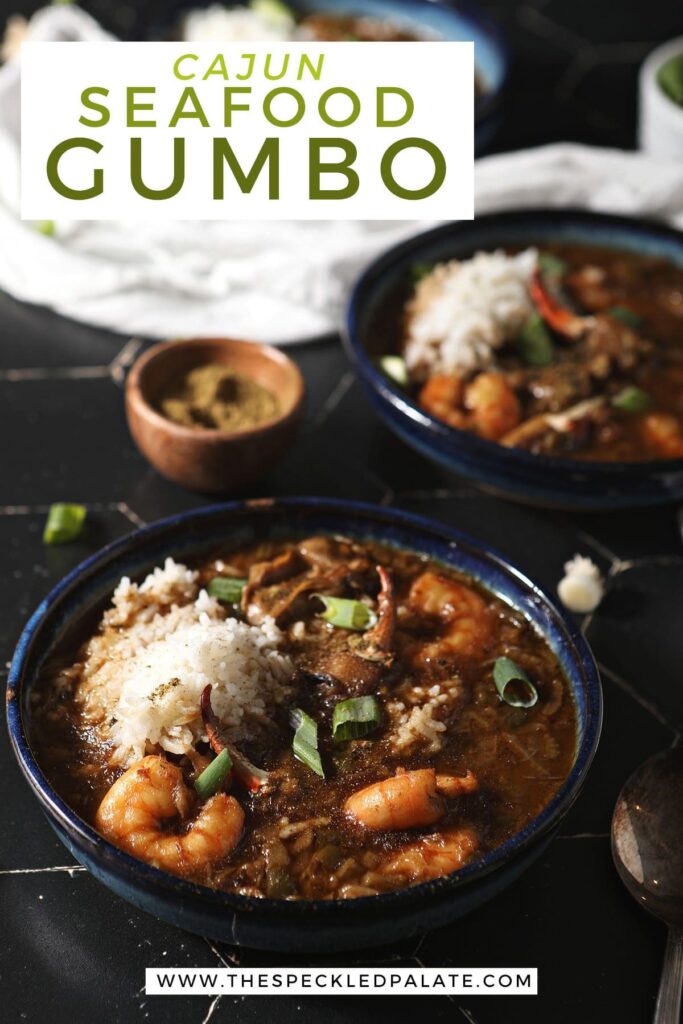
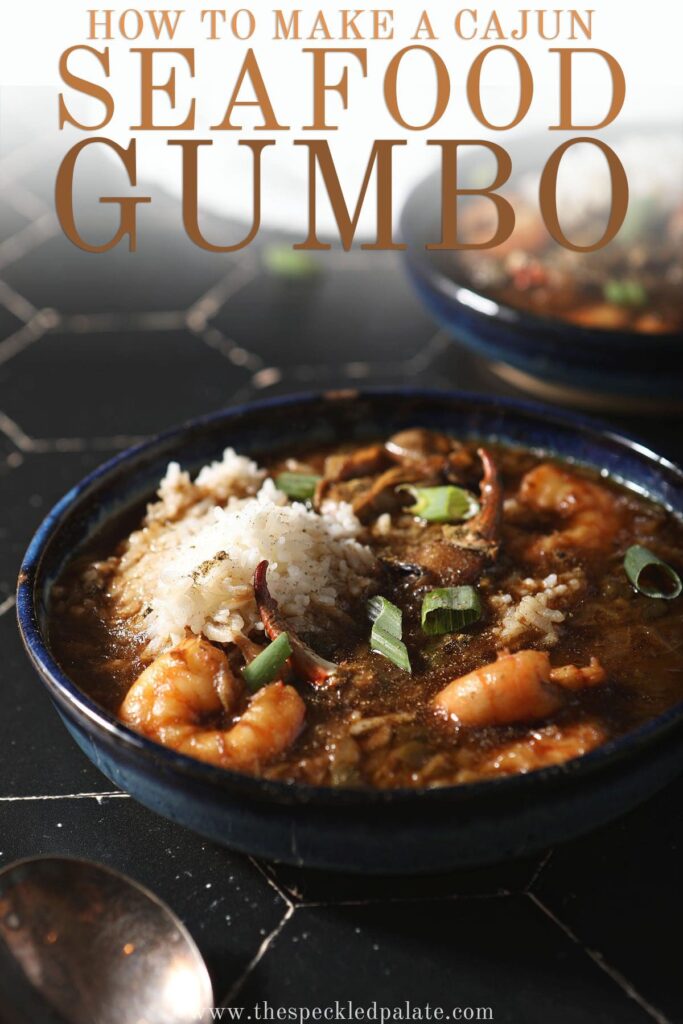
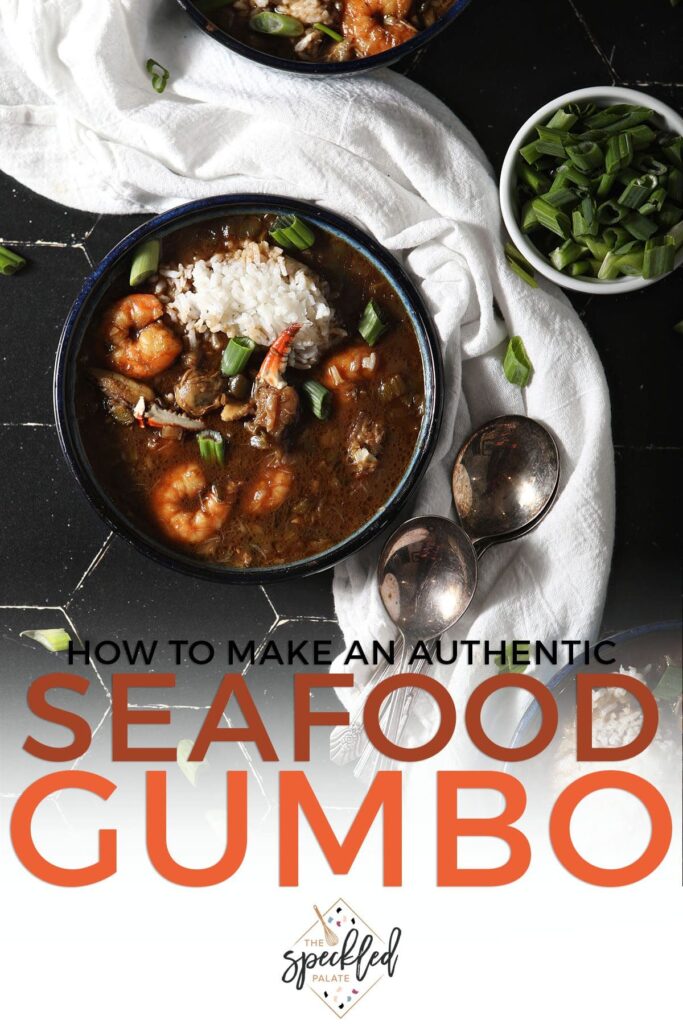
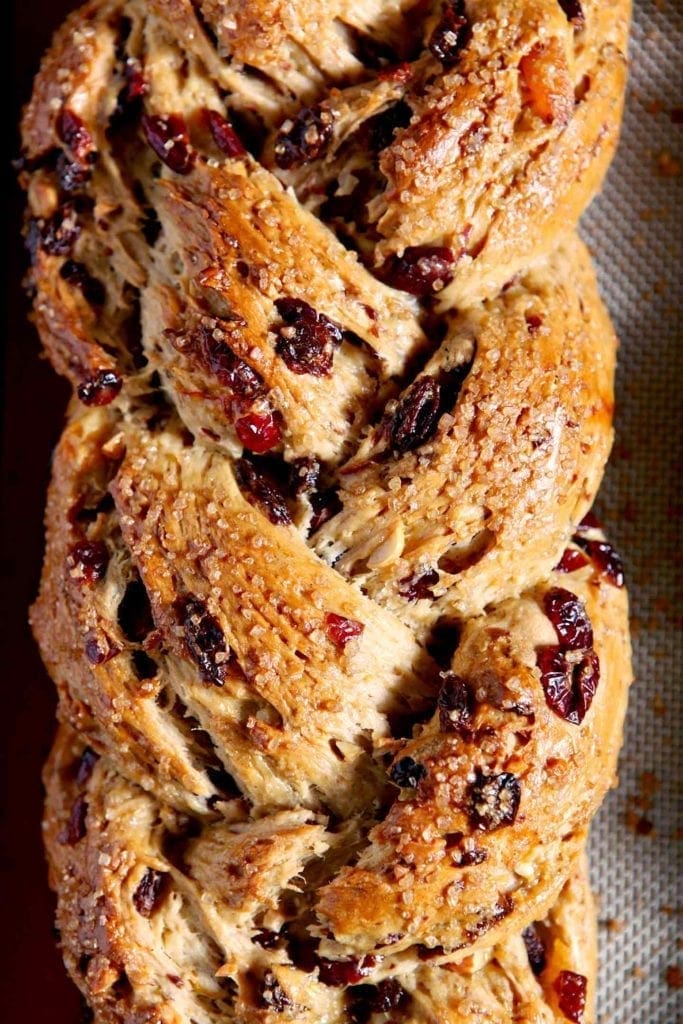
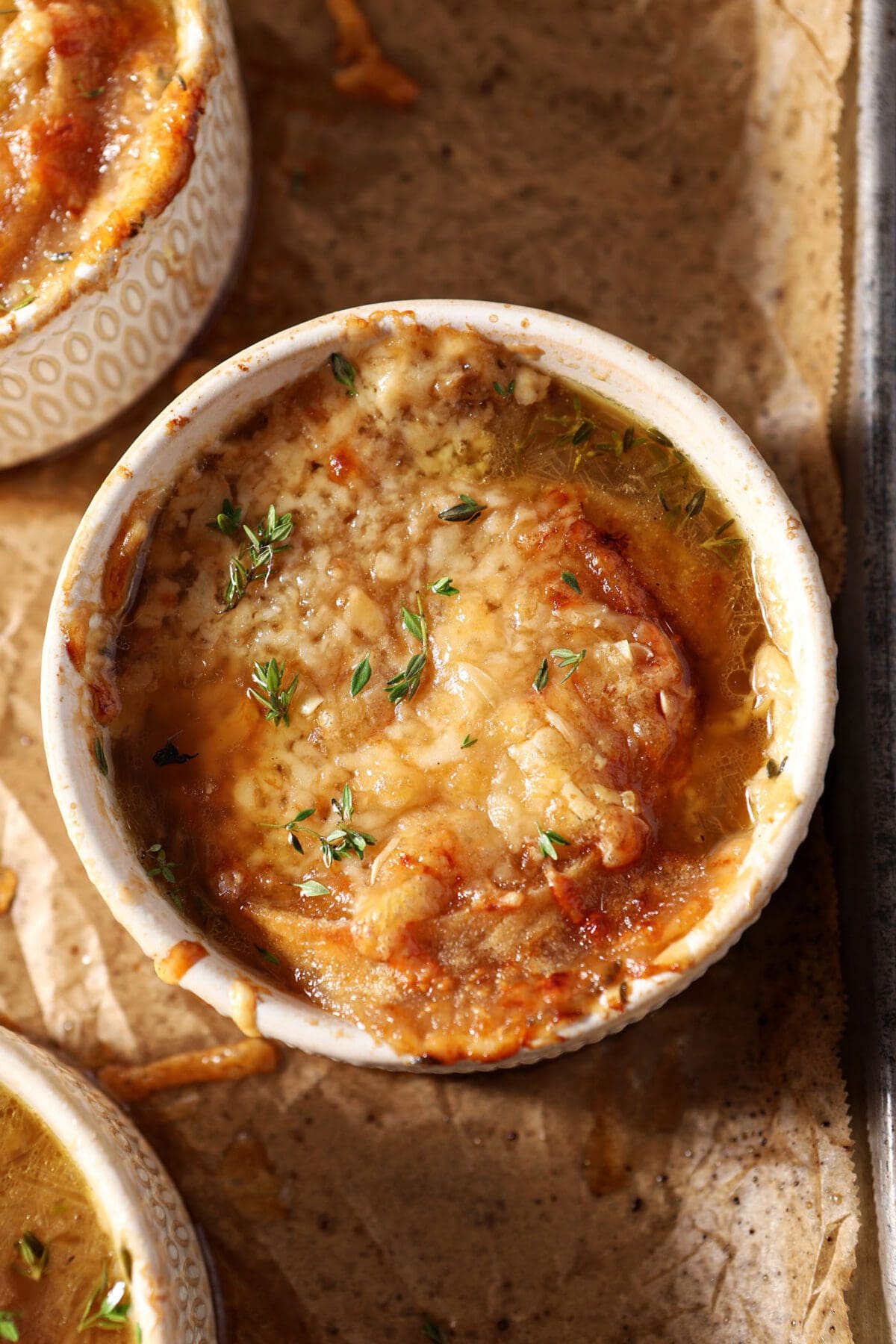
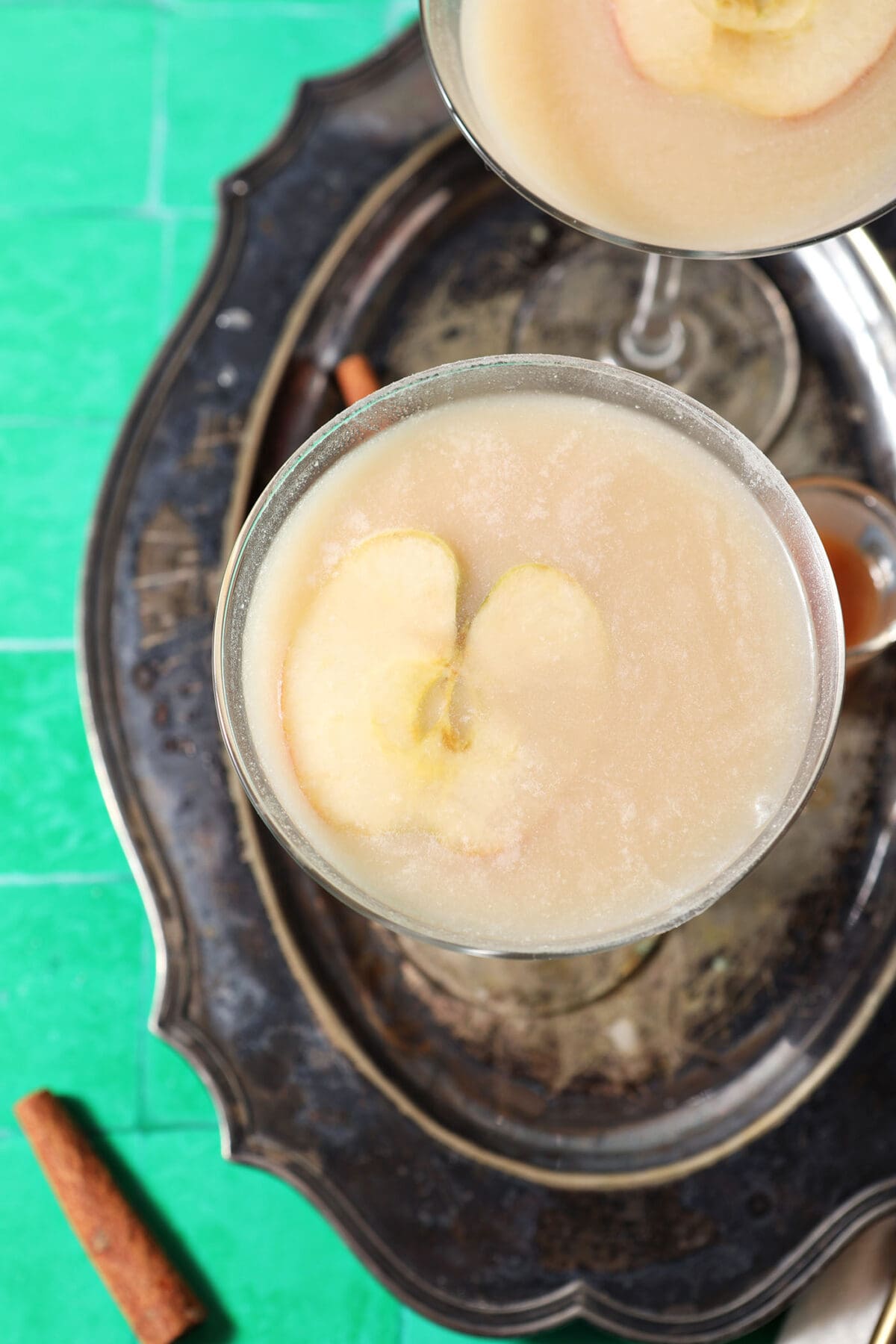
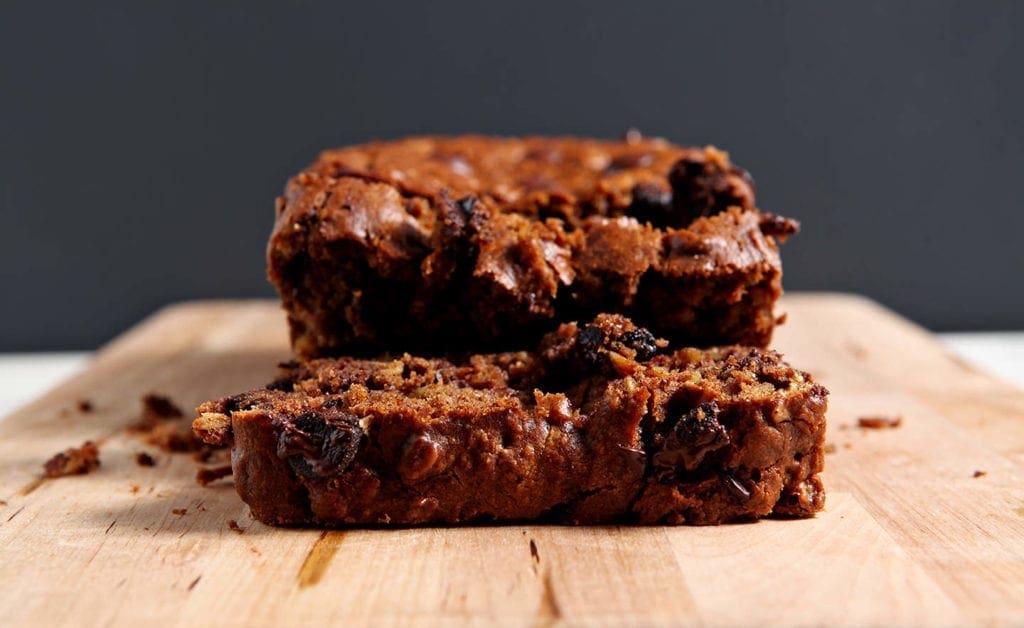
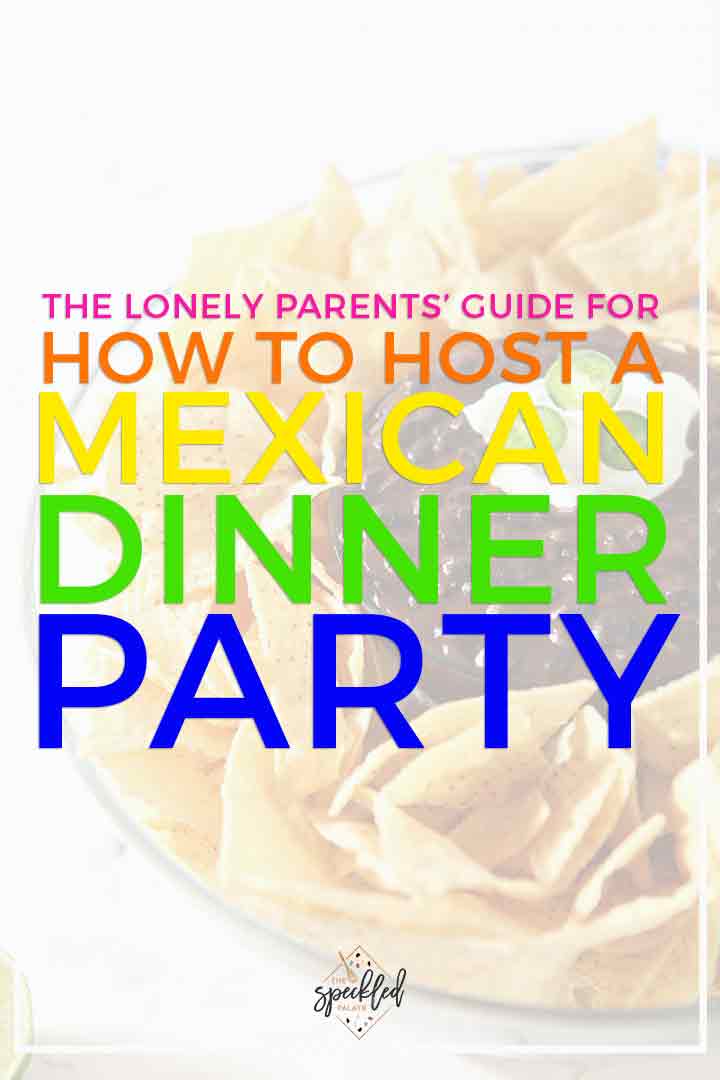
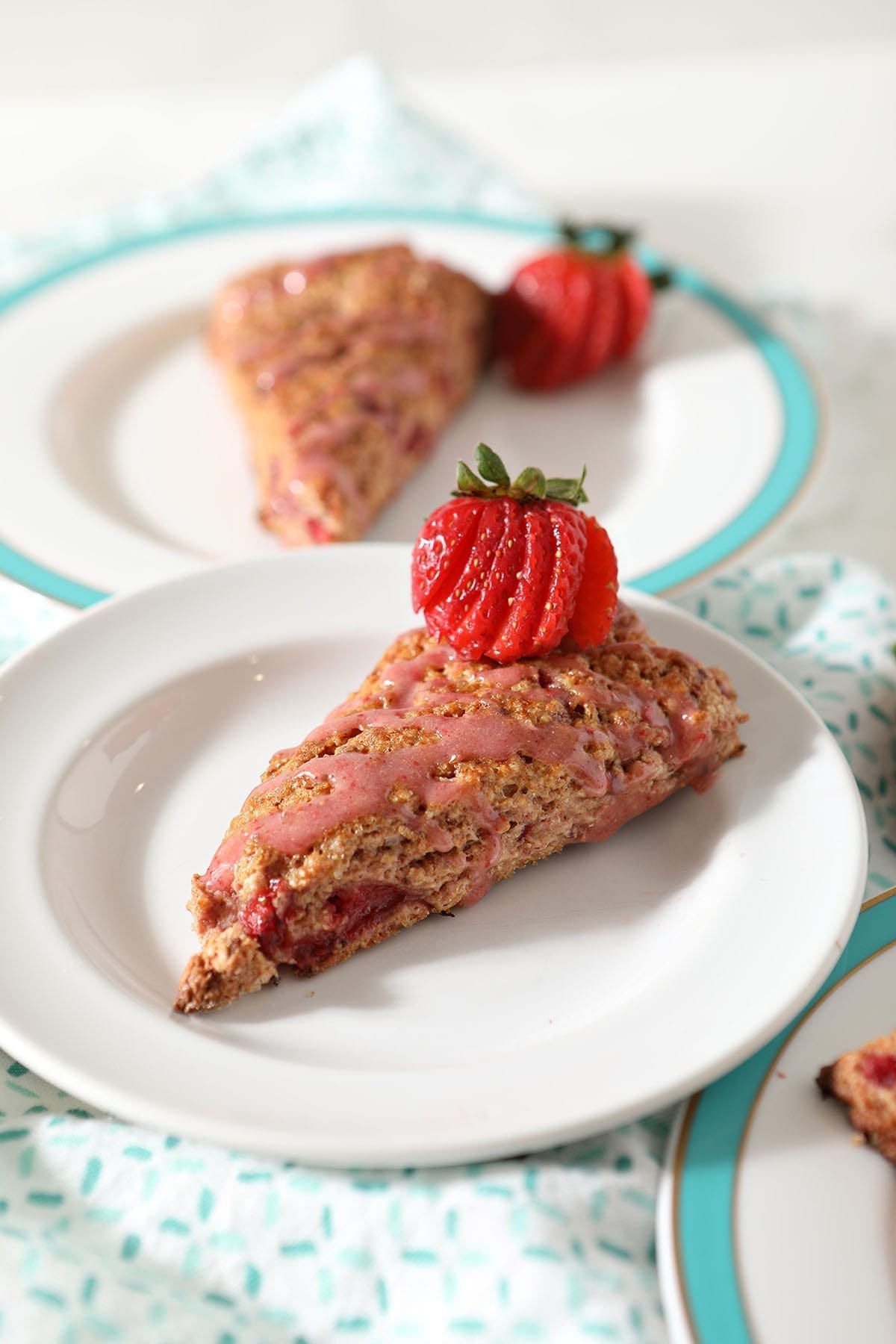
Can I reheat the gumbo? This is a large quantity and if I want to have it a few days later, what do you recommend?
Hi Deborah! Yes, you can reheat the gumbo. We’ve found that reheating it in the microwave works just fine. You can also reheat some over medium heat on the stovetop if that’s more your speed. We’ve used both of these methods, and it just depends on how much we’re reheating to determine which one. (When we used to host our NYD gumbo parties, we’d make the gumbo the day before, let it chill in the fridge overnight and then reheat on the stovetop the morning of.) I hope you enjoy it!
You can always freeze it in air tight containers or vacuum sealed bags. Personally, this Louisiana girl likes it better the next day. And we make our own seafood stock.
We love a second day gumbo, too. And these are great tips. Thanks for sharing them, Tabitha!
My wife and I pretty much make the same Seafood Gumbo as your above Seafood Gumbo receipe. We have lived in Southwest Louisiana for over 70 years. Linda is a full blooded Cajun , being 1/2 a Broussard and 1/2 a Guidry. Linda will not condone my adding of chicken stock to a seafood Gumbo. Please shed some light on how you think that the chicken stock affects taste in a Seafood (Christmas) Gumbo. The seafood gumbo that I made this morning, set us back for right around $100.00 for ingredients, so I do not get to “practice’ as much as I would love to making Seafood Gumbos.
Hey there, Jerry! Seafood stock is delicious in this recipe, too, and I have notes in both the post and recipe card about it. 🙂 We added chicken stock because it’s more accessible for us. (I’ve never seen it on shelves of our usual grocery store.) I personally think the seafood that goes into the pot (plus the brine from the oysters) gives amazing flavor. But the seafood stock obviously adds more flavors of the sea to this recipe and is a great addition if you can find it, which it sounds like you can!
I hope y’all’s gumbo tasted amazing! I’m encouraged to hear that this recipe is very similar to the one you and your wife have been making for years. Cheers!
There’s simple ways to make seafood stock with the ingredients you already have. In a pot of boiling water, add the shells of all your seafood, ends and skin of onion, a little Tonys and let it boil for a few hours then strain it. Viola…seafood stock.
Hey, that’s a great tip! Thanks so much, Tabitha! We’ll have to give this a try!
This is simmering away and smells amazing. Second time making this and cannot wait to dig in.
Oh my word!! This was hands down the BEST gumbo recipe that I have ever made or eaten in my life!! THANK YOU! this is a keeper!
This makes me SO happy to hear, Michaela! Our family adores this gumbo, too, so I’m thrilled to hear it was the best you’ve ever had! I hope you and yours get to enjoy it throughout the fall and winter months, too.
Can chicken and sausage be added to this recipe?
Hey Stephanie. We’ve never added chicken and sausage to our seafood gumbo before, but if it sounds good to you, I say do it! (And if you’re looking for a classic Chicken and Sausage Gumbo recipe, I’ve got one right here.)
If you give it a try, will you let me know how it goes?
Hi this Barb this is the first time ever cooking seafood gumbo for my 2023 New Years Dinner. I use shrimp,snow crabs and king crab .
I’am so happy I found your recipe . I’am eat it all to myself and freeze some for later . The taste is so delicious.
Thank You for sharing.
Hey there, Barb! Your comment absolutely made my day! Thank you for taking the time to leave it and for making this gumbo. I’m so happy that it turned out well for you and that you’ve got enough to freeze for later!
For some unknown reason, my husband (the best gumbo chef ever) decided to f*** what th success and “try something different.” The result if the most watery, flavorless mess ever. Can’t eat. Just throwing away $30 worth of shrimp and oysters. Inedible.
3 things I can say. 1) Nowhere in the printed recipe does it tell you when to add the salt, creole seasoning and pepper.
2) The roux directions stated that it takes 2 cups roux but it also say’s “I use 1 cup flour and 1 cup oil” that isn’t 2 cups. Although, I figured that out beforehand.
3) The final result was “just ok”.
Great recipe. I did add 1/2 pound of quality local sausage (sautéed & drained) to the gumbo as well as bay scallops. I like it best on day two, so I cooked it tonight and we’ll eat it tomorrow.
So glad you think this recipe is great, Susan! I love that you added sausage and some bay scallops, too. YUM. We love ours the second day, too, so I hope it’s delicious tomorrow!
I found it too soupy, so would suggest half as much water. Otherwise, yum
I’m a Tennessee girl too, but my gumbo recipe came from family in Mobile. I make the roux with bacon fat, which makes a huge difference, and use tomatoes and okra, and of course seafood — shrimp and crab. And onions. I have a bottle of file in my cabinet right now. And I don’t live in Memphis anymore, now I live in New Jersey.
ELLEN! Hello to a fellow Tennessee girl who’s moved elsewhere! I’m so happy that your gumbo recipe came to you by way of Mobile and involves so many fruits of the sea AND land! (We’ve never made ours with tomatoes or okra because my husband and his family are from a place where those aren’t used in gumbos traditionally. The Seeing the various styles of gumbo is so interesting to me, and I love having a bowl of whatever type of gumbo I can get my hands on.)
I’ve never made a roux with bacon fat, but I am adding that to my list for this fall and winter because it sounds amazing and incredibly flavorful. I hope you like our gumbo recipe as much as your Mobile one! So happy that you found crab meat on sale and have some good shrimp for the weekend in NJ.
Thank you so much for your comment — it’s brightened my Saturday!
And I’m going to make gumbo this weekend, as crabmeat was on sale, and we have shrimp. Can’t wait! Love, love, love gumbo.
I have a few questions. I’ve been using jarred roux (Savoie’s Dark) for several years now. When I’m making Mr. B’s Gumbo Ya Ya (chicken or duck and andouille) , I use a whole 16 oz jar, because I’m adding 20 cups of chicken stock.
But your seafood gumbo recipe calls for “16 oz of dark roux 2 cups”. Does that mean 16 oz (one jar) of the jarred roux by itself to be used with the 2 cups of a mixture of the 1 cup seafood stock and 1 gallon of water, as I do with my gumbo Ya Ya?
Or, 2 cups xixture of the jarred roux with the water?
Finally, I have lots of shrimp stock I make boiling shrimp heads. Is that as good as the store bought seafood tock?
Hey there, Bob! Thanks for your comment and your questions.
We’ve used Savoie’s Dark several times, and it’s awesome. This recipe calls for a full 16 oz. jar of roux. 16 oz. equals 2 cups of the roux, which is why it’s written that way, but I see how that could be confusing, so I’m going to update the recipe card to clarify. So you’ll use the 16 oz. roux with the gallon of water PLUS an extra cup of seafood stock. If you want this to have the same ratio as your gumbo Ya-Ya, you could do 15 cups of water and 1 cup of seafood stock. We always pour the jarred roux directly into the boiling water/stock mixture and let it dissolve in the boiling liquid.
I think that using your homemade shrimp stock would be AMAZING here. I think that would be better than the store-bought seafood stock!
I hope my response helps, and I hope you love this gumbo as much as we do!